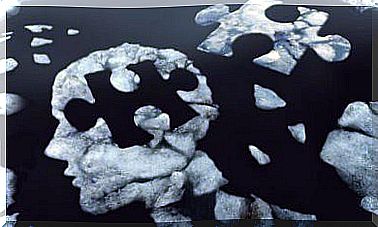Psychological Autopsy: What Is It?

Psychological autopsy is a forensic technique aimed at establishing or specifying the causes of suicide and, in some cases, confirming whether a person’s death was actually caused by that circumstance. It is a relatively new method of investigation, used systematically only in the 21st century.
The term psychological autopsy was first used in the 1950s in the works of Shneidman and Farberow. Edwin S. Shneidman was an American clinical psychologist who devoted himself to the study of suicide and thanatology. Together with Norman Farberow and Robert Litman, he founded the Los Angeles Suicide Prevention Center in 1958.
But the concept of a psychological autopsy existed in the United States as early as 1920. After the period known as the Great Depression, there was a wave of suicides. This sort of “epidemic” attracted the attention of many scientists who tried to find the common causes of suicides. But it was only with Shneidman and Farberow that the concept of psychological autopsy was consolidated.

The psychological autopsy
During a psychological autopsy, an indirect and retrospective reconstruction of the life and personality of the deceased person is carried out. It is an investigative technique that aims to establish the circumstances and reasons that led a person to commit suicide.
In general terms, it has two primary objectives: the first is of a forensic type, the second of an epidemiological nature. A psychological autopsy is carried out as part of a criminal investigation, so we are referring to a tool that complements the forensic autopsy. It is almost always used in case of doubts about the cause of death.
From an epidemiological point of view, this tool aims to collect relevant information on the behavior, circumstances and reasons for the death of an individual. All this information can be used to identify common risk factors in order to prevent or avoid new suicides.
Although to a lesser extent, this tool also serves other purposes. For example, to establish the legal validity of near-death actions (signing of documents, etc.). It can also be used to assess whether errors have been made in the therapy of people undergoing medical or psychological treatment and, among other things, to structure psychological profiles and create criminological categories.
The investigation tools
This type of autopsy is based on three tools: the study of the crime scene, the compilation of psychological profiles and an interview with people close to the victim. Crime scene study provides important clues to the case. The method chosen, the arrangement of objects around the body and other similar elements give us valuable information.
The search for psychological traces concerns the collection of letters, messages, newspapers and all those documents or information that can be useful both to establish a psychological profile of the victim and to clarify the circumstances in which his death occurred.
Interviews with people close to the victim are also aimed at gathering information about the personality or motives of the suicide. The latter is one of the most controversial procedures of the psychological autopsy. It is very difficult, in fact, to establish the prejudices or interests of the people questioned.

Psychological autopsy: the protocols to follow
There are several protocols for performing a psychological autopsy. One of the most used is the MAPI model, proposed by Dr. Teresita García Pérez. The method defined by this Cuban doctor proved to be practical and very functional. It is the most used in Latin American countries. The word MAPI refers to the four basic aspects to be analyzed. These are:
- M – Mental. Analyze cognitive skills and abilities, such as judgment, cognition, intelligence, memory and attention.
- A – Affective. Look for signs of possible affective disorders, such as depression.
- P – Psychosocial. Examine the social relationships the victim has had throughout their life.
- I – Interpersonal. It establishes how the person related to his or her closest environment.
The protocol indicates that the crime scene must first be analyzed to find psychological traces, signs and clues about the circumstances of the suicide.
Thereafter, structured interviews with three close friends are required on 60 aspects of the victim. These interviews must be held one to six months after the tragic event.
Finally, an interdisciplinary analysis is carried out involving at least one psychologist, a doctor and a criminologist. After that, a probabilistic report is drawn up. This establishes the cause of death according to the NOSE code: Natural, Accidental, Suicide, Murder. Finally, the possible causes that led the person to commit suicide are identified.









